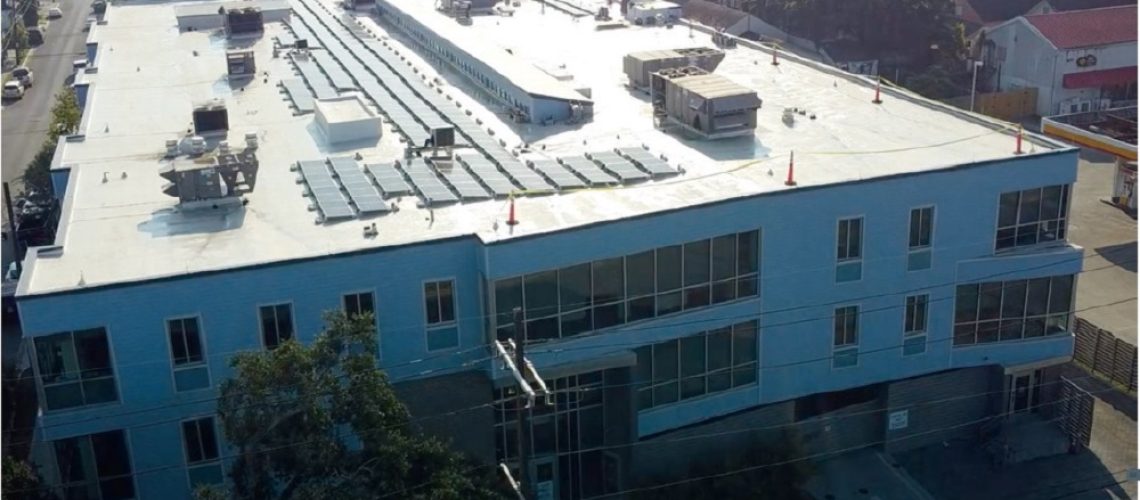Solar-plus-storage systems at any of the nation’s 14,000 community health centers can keep them running through power outages, and preserve medications requiring refrigeration. A Florida study evaluated the systems’ health care value and the financial return.
The Florida Association of Community Health Centers (FACHC) is reaching out to its member health centers in Florida to improve resilience to power outages.
Health centers’ options for backup power systems include solar-plus-storage, not just generators, “which is what most of our health centers have,” said Gianna Van Winkle, on a webinar. Van Winkle is the association’s director of emergency management programs and lead author of the association report “Supporting Access to Health Care: Resilient Emergency Power for Florida Community Health Centers.”
The association surveyed its members about power outages and any backup systems the centers currently use, and then facilitated screening studies for solar-plus-storage installations at seven Florida health centers. American Microgrid Solutions, a firm that designs and develops microgrids, prepared the screening studies. Results are shown in the table below from the FACHC report.
Marriele Mango, project director at the nonprofit Clean Energy Group and the report’s co-author, acknowledged that solar+storage systems often “don’t pay for themselves,” given modest annual utility savings, as shown in the table.
Andrew MacCalla, health resiliency advisor at the humanitarian organization Direct Relief, said that the financial return on investment for solar-plus-storage systems at health centers may be adequate to justify the systems in California, Hawaii, Puerto Rico, New England and the Northeast, which have higher costs for electricity. Direct Relief installed clean energy microgrids at about 20 health centers in Puerto Rico after Hurricane Maria using donated funds, MacCalla said.
In areas with low costs for electricity, evaluating the health benefits may be more important in making the investment case. Possible benefits include providing uninterrupted refrigeration for medications and vaccines that require refrigeration, and providing ongoing care for patients who may otherwise need to drive to a distant hospital for care. Florida health centers reported an average financial cost of $41,000 per day from not having emergency power, counting expenses such as loss of medication and vaccines, canceled appointments, and staff-related expenses, said the FACHC report.
Solar-plus-storage screening studies are planned for eight more Florida health centers. All health center sites that move forward with solar-plus-storage through the FACHC project will have a hybrid system consisting of solar, storage and a fossil-fuel generator. Some already have a generator, and others will add one. Direct Relief has committed to funding installation of up to 15 systems in Florida.
Regarding health centers’ interest in integrating solar-plus-storage with existing generators, Van Winkle said that “some health centers have pretty good experience with the generators that they have. Then again, after Hurricane Ian, I heard of a number of health centers that had their generator damaged by debris, or flooded, or having some type of overheating or mechanical failure, or a gas leak. So I think we’re all realistic knowing that they can fail. But until you experience something like that firsthand, you might not have the motivation to seek out something new.”
As a possible funding source for solar-plus-storage, health centers nationwide are eligible to apply for mitigation funding from the Federal Emergency Management Agency (FEMA), says the FACHC report, explaining that mitigation funding is a form of non-emergency disaster assistance.
MacCalla said the National Association of Community Health Centers is “very involved” in educating health centers about the value of resilient emergency power, and providing case studies “to show which of their colleagues are doing it and why health centers should try to do this.”
About 14,000 Federally Qualified Health Centers across the United States provide medical care in areas where economic, geographic, or cultural barriers limit health care access.
Installing a clean energy microgrid at all 14,000 community health centers nationwide would require an investment of $3 billion to $5 billion, MacCalla said, implying an average cost between $215,000 and $360,000 per system.



